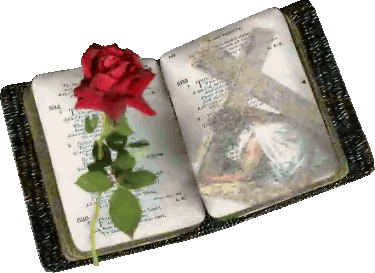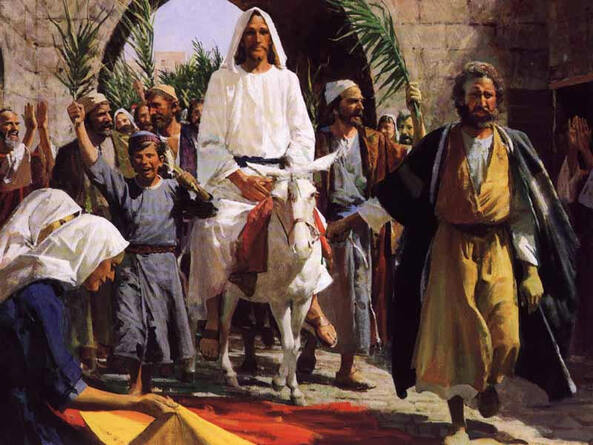Matthew 21:1-17
Lesson 41
Lesson 41
Read both the "King James Bible" and the "New Living Translation."
In this lesson:
Jesus arrives in Jerusalem.
One by one, Christ silences His enemies with logic and His knowledge of the Scriptures. His enemies will give up trying to finish Him with trick questions by the time we get to Matthew 22:46 (lesson 45).
Jesus arrives in Jerusalem.
Christians refer to this as Palm Sunday.
Christians refer to this as Palm Sunday.
Study Tip:
As you study the Bible, use the five W's technique employed by investigative journalists. Ask yourself who, what, when, where, and why as you read each passage.
As you study the Bible, use the five W's technique employed by investigative journalists. Ask yourself who, what, when, where, and why as you read each passage.
Where was -
Bethphage -
A small village near Bethany located between Jericho and Jerusalem on the Mount of Olives (Luke 19:29). The name means "house of figs." The village no longer exists.
Mount of Olives -
Sometimes called Mount of Olivet, it is a small mountain located less than two miles east of Jerusalem. 2 Kings 23:13 calls it "the mount of corruption" due to the pagan altars King Solomon built (I Kings 11:7) there centuries before the birth of Christ. Jesus spent many nights on the Mount of Olives when visiting Jerusalem (Luke 21:37) and it was here that He was arrested. Ezekiel 11:23 and Zechariah 14:4-9 tell us that when Christ returns to establish His kingdom, it will be to the Mount of Olives.
Bethphage -
A small village near Bethany located between Jericho and Jerusalem on the Mount of Olives (Luke 19:29). The name means "house of figs." The village no longer exists.
Mount of Olives -
Sometimes called Mount of Olivet, it is a small mountain located less than two miles east of Jerusalem. 2 Kings 23:13 calls it "the mount of corruption" due to the pagan altars King Solomon built (I Kings 11:7) there centuries before the birth of Christ. Jesus spent many nights on the Mount of Olives when visiting Jerusalem (Luke 21:37) and it was here that He was arrested. Ezekiel 11:23 and Zechariah 14:4-9 tell us that when Christ returns to establish His kingdom, it will be to the Mount of Olives.




